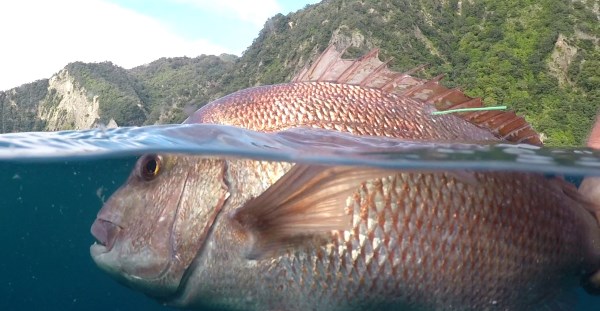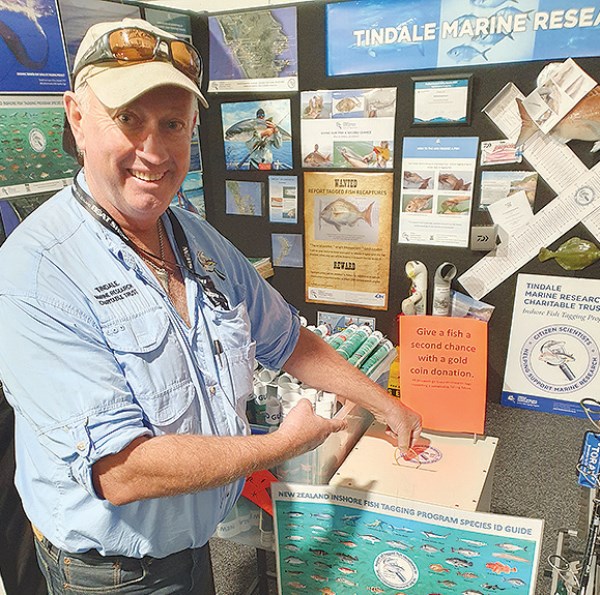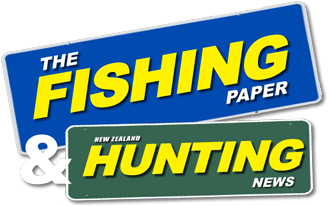
Internationally renowned anglers Scott and Sue Tindale were recently awarded the Ocean Guardian and Supreme Sustainability Awards for a recreational fish-tagging programme – work that could lead to a better ecological understanding of regularly caught recreational fish species.
The Tindales were among a range of other fishers, marine farmers, kaitiaki/ tiaki, and researchers from around the country recognised at the 2023 Seafood Sustainability Awards ceremony held at parliament in June.
The Tindales have been in the fishing game for quite some time. In addition to the hundreds of fishing records they’ve achieved over the years, for decades they’ve used their game-fishing skills to help with satellite tagging of sharks, collecting museum specimens, and photographic assignments for various publications.

In 2020, the Tindales were finalists in the inaugural Seafood Sustainability Awards in the Kaitiakitanga and Minister of Fisheries award category, so their recent achievement builds on that success, celebrating a lifetime of work towards more sustainable fisheries.
The couple – who are the founding directors of the Tindale Marine Research Charitable Trust – have spent many years raising public awareness on reducing bycatch (fish and seabird) mortality, along with reducing the ecological harm caused by discarded fishing lines on sea wildlife.
“While the aim of our work isn’t to fill the cabinet with awards, it’s really satisfying to have this important work recognised at the highest level with these recent awards,” Scott Tindale says.
The Tindales most influential project, which led to them taking out the Supreme Sustainability Award, is an initiative where the public can get involved. It’s a citizen science inshore fish tagging programme they launched in 2018 which now has over 1500 members who are tagging and releasing thousands of fish throughout New Zealand’s coastal waters.
“This was a first of its kind project, where tagging volunteers could choose what species they wanted to tag, what size fish and where in New Zealand waters. This gives a better sample of the coastal habitats and fish biodiversity in harbours and coastal waters.
There are now more than 65 species in the tagging program, including the most popular recreational targeted species such as snapper, blue cod, kahawai, small sharks, and kingfish.
When tagged fish were recaught, we were able to look at and learn more from the fishing method, fish movements and stock structure, growth rates, mortality, and population size. Over time the data collected can also show trends caused by human impacts or natural disasters.
The results from tagging can be used to help fill any knowledge gaps we might have in managing how we treat fish more sustainably.”
Scott Tindale says environmental education and fishing more sustainably are connected.
“This is a straightforward programme that anyone can get involved in. Even young teenage fishers can participate by learning to handle and release unwanted catch correctly, ensuring their best chance of survival and therefore keeping only the fish that is needed.”
He says tagging has been effectively used across the world to track seasonal movements, preferred habitat, and growth rates of many marine species.
“It’s a tool already familiar to New Zealand game fishers through the Fisheries New Zealand Co-operative game fish tagging program, but any previous studies on inshore fish have been short-term and generally focused on commercial fishing activity,” he says.
Fisheries New Zealand supports the programme and is looking for ways to incorporate this data into fisheries management systems because it could provide valuable information for monitoring fish stocks.
“We’re also discussing ideas with Fisheries New Zealand on potentially involving a limited number of commercial fishers in specific fisheries in the tagand-release programme as commercial fishers already support other research programmes.
By potentially including released commercially caught fish, we’d hope to see return seasonal migrations from these tagged fish. This would provide vital knowledge on the migrations of species being targeted by all sectors in our shared fisheries,” Tindale says.
Meanwhile, anyone keen to know more or become a citizen scientist by getting involved in the tag-andrelease programme should visit the Tindale Marine Research Charitable Trust Facebook site or their website.












